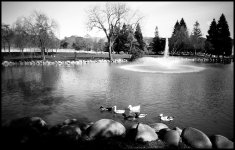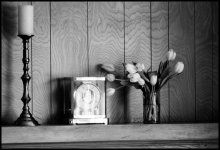One comment about your actual goal of finding a finer grain film than TXT @ 200 (or whatever it is that you expose it at - I know you overexpose). First, consider _not_ overexposing by so much. Clearly, you want the shadow detail, but 200 EI is overexposure unless you are using a combination of developer and technique (mostly just pulling) that will compensate. But overexposure will increase grain. Grain is minimal while retaining shadow detail somewhere around 250-320 in most developers. At 200, you have to consider D76 1+0 or even Perceptol.
FP4 is just as flexible in terms of exposure, but is grainy for a 125 speed film. So no good there.
Foma 100, which is what you're shooting, is supposedly the closest thing to Agfa APX 100. The latter was not known as being super fine grain, IIRC, but great in terms of tonality. Agfa films also tend to be slower in almost all developers than its box speed, but a full stop seems a bit excessive. And, again, your comment about frustration over shooting at 50 (which wasn't and was never interpreted as to be the _main_ point of your post, just one of them) caused me to bring up some suggestions about getting better results though better metering techniques.
So, in a way, my suggestions re: metering also have an impact on grain.
If you do carry a mter with you, you can try Delta 100. It's certainly not all that forgiving, but if you do carry that meter around or at least expose somewhat conservatively (sunny f16 at least, not the f11 "shadow detail" rule I often use), you will find remarkably fine grain. Otherwise, if you're forced to shoot Foma at 50, you might as well move to Pan F + (but very contrasty, so watch your development times) or even the Efke films, which almost always give full speed, even in Rodinal.
allan



